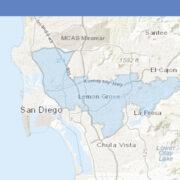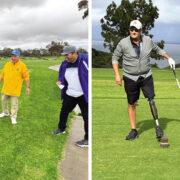IF you are adopting a child from a foreign country and wish to bring the child to the United States, you must comply with the adoption laws of the child’s country of origin, the laws of the United States and the laws of your state of residence (“home state”). In addition, you must comply with the Hague Adoption Convention if the child is from a country who is a party to the said Convention. The Hague Adoption Convention is an international agreement establishing safeguards and processes for intercountry adoptions and provides that before you can file a petition in Court to adopt a child from another country, you must first be found suitable to adopt and the child must be found eligible for placement and adoption.
Both the United States and the Philippines are parties to the Hague Adoption Convention, and as of April 1, 2008, the Philippines has implemented the Convention for all intercountry adoptions by processing al adoptions through the Philippine Inter-Country Adoption Board (ICAB). Adoptions that were began in Philippine Courts before April 1, 2008 are not subject to the Convention and will be processed in accordance with the regular Philippine laws and US Immigration laws on adoption.
Who Can Adopt? Before you can adopt a child from abroad and bring that child to the United States, you must first be found suitable to adopt by the US Citizenship and Immigration Services (“USCIS”). The basic requirements under United States laws are: (1) You must be a US Citizen, and must habitually reside in the United States (there are different rules if you are a US citizen living abroad). (2) If you are unmarried, you must be at least 25 years old – but, if you are adopting from the Philippines, you must be at least 27 years old. (3) If you are married, you must jointly adopt the child (even if you are separated but not divorced), and your spouse must also be either a US citizen or in legal status in the United States. (4) You must be found suitable prospective adoptive parent/s, as established by criminal background checks and a home study report prepared by an accredited Adoption Service Provider. In addition, you must meet and comply with your home state’s requirements for prospective adoptive parents.
After USCIS finds the prospective adoptive parents (“PAPs”) suitable to adopt, the PAPs’ papers are sent to the Philippine Inter-Country Adoption Board (“ICAB”) who will then make its own determination if the PAPs also meet Philippine law requirements, as follows: (1) PAPs who are married, must have been married for at least one year; and must file jointly for adoption. (2) PAPs must be at least 27 years of age and at least 16 years older than the child at the time of application; and the maximum age gap between the PAPs and the child to be adopted child must not exceed 45 years. The age gap requirement does not apply if one of the PAPs is the biological parent, step parent or a relative within the 4th degree of consanguinity of the child to be adopted. (3) Single applicants are eligible to adopt children between 6 and 15 years old in the Waiting Child Program. (4) For PAPs who are divorced, ICAB will only consider PAPs who have 2 or fewer divorces and assess the stability of the current marriage to evaluate their suitability. (5) Philippine law does not recognize same-sex marriage, and it is not clear what is ICAB’s policy on PAPs who are gay, bi-sexual, or transgender. (6) PAPs must not have been convicted of a crime involving moral turpitude. (7) PAPs must pass a physical and medical evaluation, and must not have unacceptable health conditions like obesity and “metabolic syndrome.” (8) PAPs must also have a psychological evaluation containing a discussion of their childhood experiences, marital/family relationship, capability of handling the adoption and parenting. (9) PAPs must have the written consent to the adoption of their biological children who are 10 years old and over.
Who can be Adopted? The child to be adopted must meet the definition of a Convention adoptee under US laws in order to immigrate on an immigrant visa, which is: a child determined to be eligible for adoption; and who has been fully and finally adopted in a court abroad, or whose adoption will be filed and finalized in a US court.
Once ICAB determines that PAPs are suitable to adopt under Philippine laws, it will then determine if the child is eligible for adoption under the following guidelines: (1) ICAB will match the PAPs with a child; and PAPs cannot choose a particular pre-identified child, unless the child is a relative within the 4th degree of consanguinity or a child with special circumstances or needs. (2) The child must be under 15 years of age, except where the child is a birth sibling of another child who has been adopted or will be adopted by the same PAPs, in which case the sibling child is eligible if he is 16 years old but under 18 years of age. (3) There must be a Deed of Voluntary Commitment signed by the child’s birth parents relinquishing the child to the Department of Social Welfare and Development (“DSWD”) for subsequent adoption. (4) If the child is abandoned and no parent is available to sign the Deed of Voluntary Commitment, an authorized agency or other acceptable entity can petition the DSWD to issue a certificate stating that the child is legally eligible for adoption.
Relative Adoptions. There are only two (2) situations where ICAB will process a particular pre-identified child – either the child is a relative within the 4th degree of consanguinity or affinity (as per ICAB Board Resolution No. 069-62, series of 2012), known as relative adoption; or the child is deemed with special circumstances or a special needs child. The relatives within the 4th degree of consanguinity or affinity include your brother/sister, grandchild, great grandchild, nephew/niece, first cousin; and your spouse’s child, brother/sister, grandchild, nephew/niece, etc.
The PAPs have the option to finish the adoption process in a Philippine court or in a United States court. Your child will be issued an IH-3 immigrant visa, if there is a full and final adoption in a Philippine Court; or an IH-4 immigrant visa, if you have been given and you have taken custody of the child, and you are bringing the child to the United States and finalize his/her adoption in a United States court.
***
Atty. Aurora Vega is a partner in The Law Firm of Chua Tinsay and Vega (CTV) – a full service law firm with offices in San Francisco, Sacramento, San Diego and Manila. The information presented in this article is for general information only and is not, nor intended to be, formal legal advice nor the formation of an attorney-client relationship. Call or e-mail CTV for an in-person or phone consultation to discuss your particular situation and/or how their services may be retained at (415) 495-8088; (619) 955-6277; [email protected].




